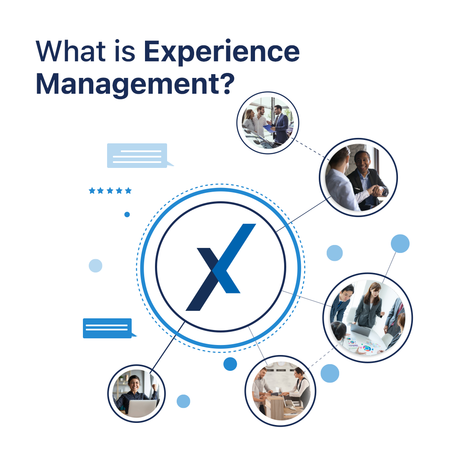Customer obsession has long been a leading tenet of exceptional CX, but it is only half of the equation. After the tumultuous disruptions of 2020, enterprise organizations across industries quickly learned that experience management — an integrative strategy that combines both customer experience and employee experience programs — has a major impact on business outcomes.
In other words, if you want to deliver exceptional customer experiences, you must simultaneously be committed to a workplace culture that bolsters employee experiences. The reality is workplace culture can be the ultimate competitive advantage: McKinsey and Company found organizations that embrace a healthy culture, where employees are aligned around a common vision, are three-times more likely to outperform companies with unhealthy workplace cultures.
“Focusing on culture as a primary means to strengthen customer centricity may seem counterintuitive. But it is employees who interact with customers, hear their concerns first, and observe what delights them before these signals ever form an identifiable, trackable data pattern in a company’s systems. A healthy organizational environment for employees thus directly affects customers,” writes McKinsey.
McKinsey’s findings underscore why experience management is so crucial to an organization’s success. But how do you transition from a company that has been solely focused on customer experience to one that fully embraces holistic experience management strategies?
What is Experience Management?
To start, it is necessary to understand exactly what experience management means. As an organization, you are delivering experiences to two primary groups: Your customers and your employees. Whether or not you are delivering deliberate experiences depends on the employee programs and customer journeys you have constructed.
Many organizations do both. They create employee experiences that are implemented and managed by human resource departments and company culture teams. Meanwhile, their customer experiences are designed by various business units, including CX teams, marketing organizations, customer support and customer service departments.
A key facet of experience management involves taking an integrative approach to customer and employee experiences, proactively breaking down the silos between the two. By capturing both customer and employee feedback, monitoring both internal and external experiences, and operationalizing that data, organizations can design and enable full-scale experience management programs.
How does Experience Management impact business outcomes?
In addition to outperforming competition, McKinsey found companies that embrace a customer-centric mindset combined with a healthy workplace culture increased their odds of a successful transformation by 30% to as much as 79%. Last year, a Forrester study commissioned by SAP found that 91% of highly satisfied employees reported they didn’t mind putting in extra hours if it helped the team or their company.
“Organizations with more advanced EX [employee experience] practices see nearly twice the return on their investments,” writes Forrester.
In the same way that happy employees make customers happy, satisfying employee experiences enable satisfying customer experiences. The two go hand-in-hand, mirroring each other’s gains. Businesses with high employee engagement and low employee churn rates are better equipped to increase customer acquisition and retention rates. In fact, incentivized employee experience programs that reward staff based on customer satisfaction can directly impact revenue.
Who benefits from Experience Management?
The advantages of experience management are far-reaching, impacting a business at every level. Because experience management programs are designed to drive a healthy, intentional workplace culture, while simultaneously delivering exceptional customer experiences, it benefits everyone from the CEO to entry-level workers who are often on the frontlines of the business.
In addition to advancing measurable outcomes, strategic experience management can elevate a brand’s reputation and significantly boost Net Promoter Scores. It can also improve recruitment practices, helping companies win over top talent and retain high-performing employees. A comprehensive experience management strategy is threaded throughout the organization, tying together internal employee-based initiatives with external customer-facing efforts.
As digital transformation continues to be the top priority for brand leaders and enterprise organizations, experience management will be the defining factor that gives businesses of all types a competitive edge. By integrating the full scope of employee and customer experiences, the companies that lead on the experience management front will be better able to deliver exceptional customer experience combined with best in class employee programs.
LINKS
- “Writes”: McKinsey: “The human touch at the center of customer-experience excellence” https://www.mckinsey.com/business-functions/operations/our-insights/the-human-touch-at-the-center-of-customer-experience-excellence
- “Write” Forrester: “Don’t just mind the employee experience gap — close it.” Forrester study commissioned by SAP: https://www.sap.com/documents/2021/01/e2e3b57d-c97d-0010-87a3-c30de2ffd8ff.html


















